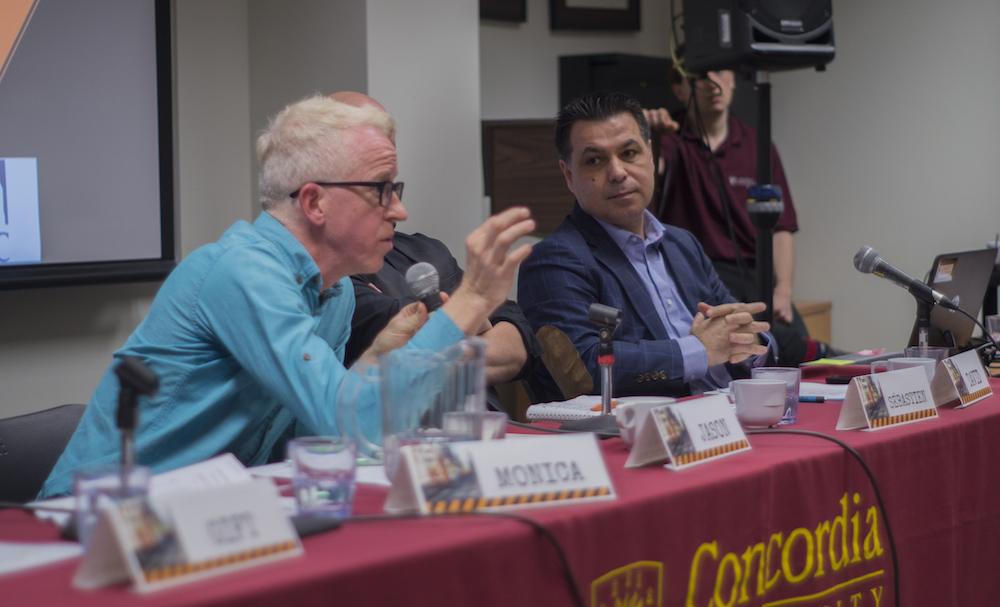A discussion of infrastructure sustainability issues at Detours Ahead panel
A number of people voiced their frustration with inefficient public transportation, poor road conditions and generally chaotic approaches to infrastructure planning and maintenance in Montreal at a panel discussion held on Jan. 30 in Concordia’s Hall building.
Although the word “sustainability” normally brings to mind environmental concerns, the panel’s organizers from the Concordia School of Community and Public Affairs Students’ Association (SCPASA) said accessibility concerns, such as who does or doesn’t have easy access to public transportation, are an equally important aspect of sustainability when it comes to infrastructure.
The panel was moderated by Montreal Gazette columnist Celine Cooper, who began by asking panelists what they think of when they see an orange cone. It was a humorous prompt that allowed each panelist to highlight the issue of infrastructure sustainability from their own perspective.
For Gift Tshuma, a disability activist from Accessibilize Montreal, orange cones simply mean inaccessibility. Monica van Shaik, another Accessibilize Montreal advocate, expressed her hope that an orange cone might mean an important improvement to infrastructure, such as a new elevator at a metro station.
Jason Prince, an urban planner and professor at the School of Community and Public Affairs, asserted the orange cone still means corruption and diverting money to organized crime, to which David De Cotis, the deputy mayor of Laval and an executive on the board of the Société de transport de Laval, felt compelled to dispute when it was his turn to speak.
De Cotis touted Laval’s accomplishments in making public transit more accessible. He also provided insight into the kinds of trade-offs a city makes when managing limited budgets for public services, such as determining whether there is enough demand for it to be economically sensible to establish a new bus route in an unserved area.
De Cotis also mentioned some environmentally friendly initiatives the city of Laval has adopted, such as reducing transit fares to $1 on smog days.
Overall, the discussion was primarily centred around transportation, which has the most day-to-day impact on people’s lives.
Panelists spent time discussing what impact the newly elected mayor, Valérie Plante, might have on infrastructure issues. Prince observed that, while a lot can be done on the local level, infrastructure development operates at a provincial level in Quebec and “all the strings lead back to Quebec City.”
Other difficulties that panelists identified within infrastructure planning in Montreal include tensions between those in the downtown core versus periphery boroughs. While people living in areas served by the metro prefer using public transit, those who live in the east, west or off-island prefer getting around by car.
Also driven home during the discussion was the scale of the transit accessibility problem for people in wheelchairs, especially during the winter when snowbanks make bus ramps less accessible.
During the question and answer portion of the panel, the topic of unreasonable commute times arrose. “It took me 45 minutes to get between Côte-Vertu and Lionel-Groulx [metro stations] today,” said one audience member.
In response, Prince encouraged them to write a handwritten letter to the mayor and Philippe Schnobb, the head of Société de transport de Montréal (STM), to tell them about the problems.
“They need these letters right now, because the political will is there,” he said. “We need to keep the pressure on.”
After the panel, Prince told The Concordian that “students are a special category of citizens in this city.” He noted that there about 250,000 students enrolled in schools in the downtown area in any given academic year.
“Concordia students have political power,” Prince said. “They should wield it to make changes in the city.”
Photo by Kenneth Gibson
